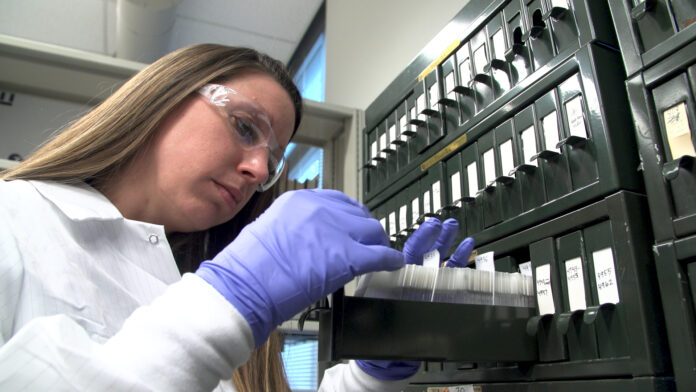New machine learning tool could aid Alzheimer’s research
In an effort to speed up Alzheimer’s research, researchers at UCSF, UC Davis and Tsinghua University in Beijing have found a way to apply machine learning techniques to accurately find two hallmarks of Alzheimer’s disease in human brain tissue: amyloid plaques and blood vessel abnormalities.
“One of the major challenges is that by the time people have clinical symptoms, there is a great deal of brain damage,” said Laurel Beckett, professor and chief of the Division of Biostatistics in the Department of Public Health Sciences at UC Davis. “So we need to start treating people earlier – but how do you know if people are “at risk” or developing damage, or if treatment is helping if you can’t see symptoms? This motivated the use of biomarkers: brain imaging, and analysis of fluid samples such as cerebrospinal fluid or blood samples, combined with genetics.”
The tool works by studying an image, splitting it into different parts and comparing those parts to a labeled dataset that contains thousands of images. This analysis provides predictions for each part based on what the tool has already seen. The predictions can then be converted to a count, which is used to identify different kinds of brain changes.
The algorithm can process a whole-brain slice with an accuracy of 98.7%. Using the algorithm requires multiple disciplines to come together.
“A computer engineer is typically needed to implement the algorithm,” said Brittany Dugger, an assistant professor in the UC Davis School of Medicine. “These projects are phenomenal examples of cross-disciplinary translational science: neuropathologists, a statistician, a clinician, and engineers [come] together, [form] a dialogue and [work] together to solve a problem.”
The immediate benefit of this tool is that it vastly increases the number of slides that can be analyzed at once relative to how many would have been analyzed by just an expert neuropathologist.
“This makes it possible to look at many more brain tissue slides than before, and maybe eventually even at slides of tissue outside the brain, in case there are plaque locations that we’ve been missing but would be easier to test for early Alzheimer’s diagnoses,” said Michael Keiser, assistant professor in the Institute for Neurodegenerative Diseases and the Department of Pharmaceutical Chemistry at UC Davis.
Written by: Kriti Varghese — science@theaggie.org





